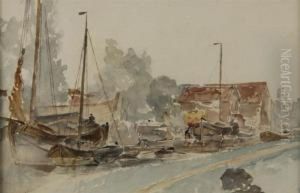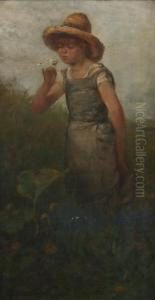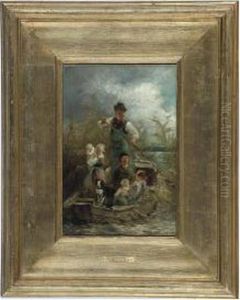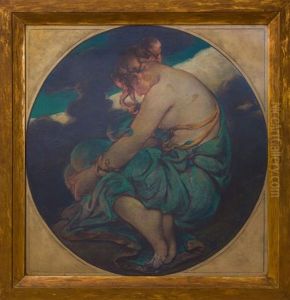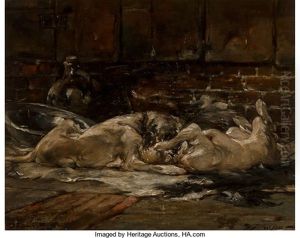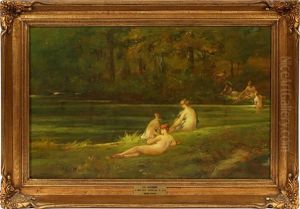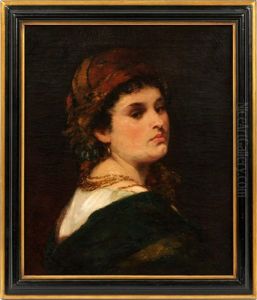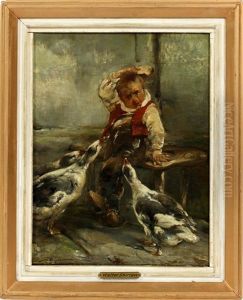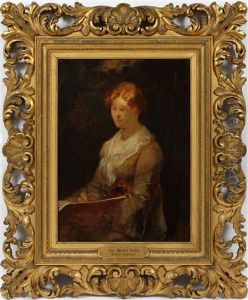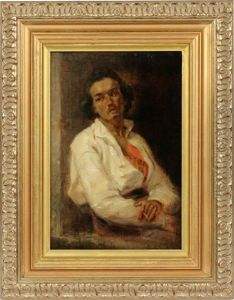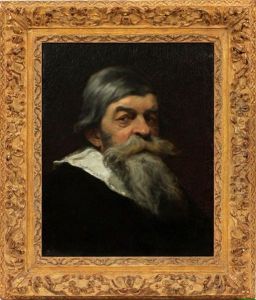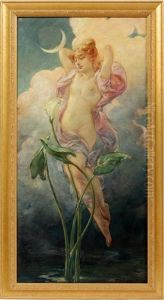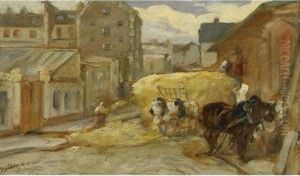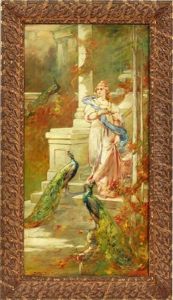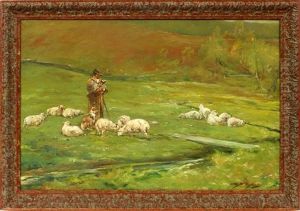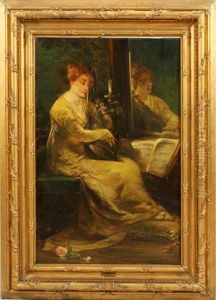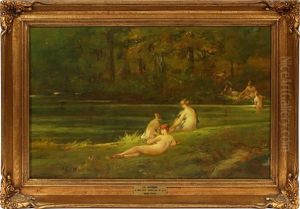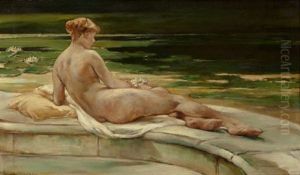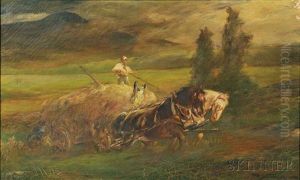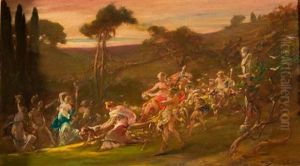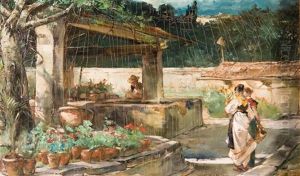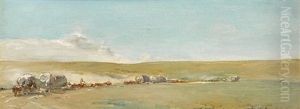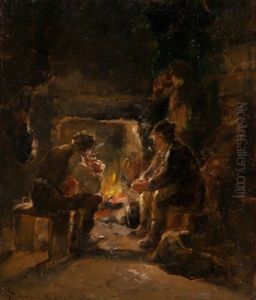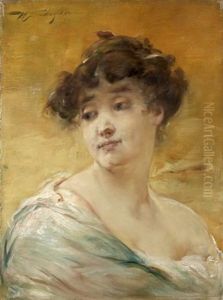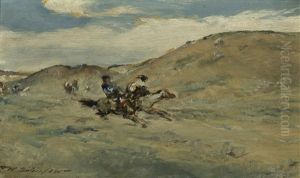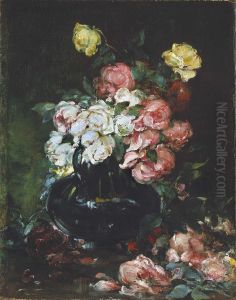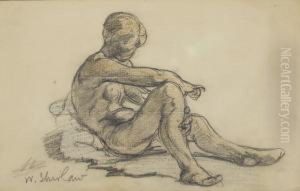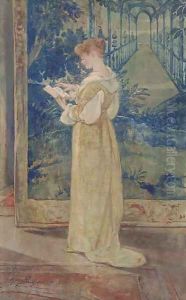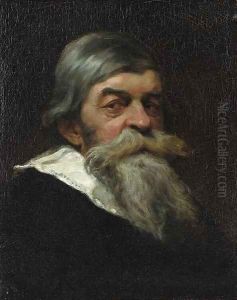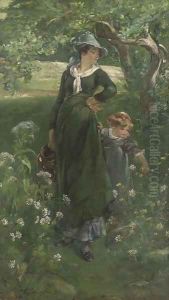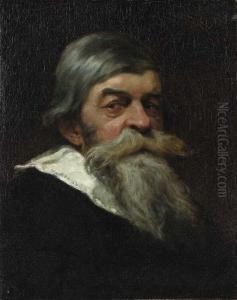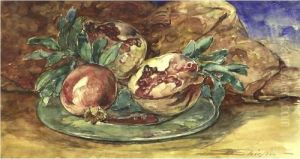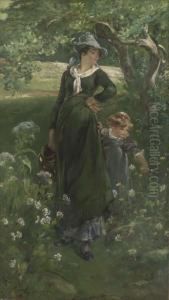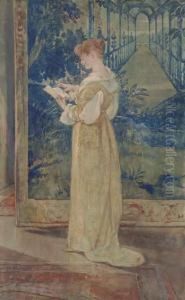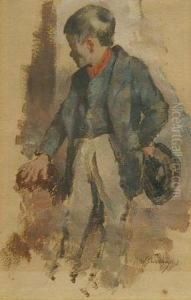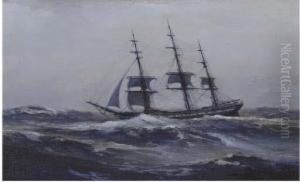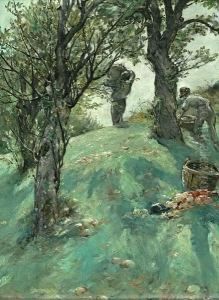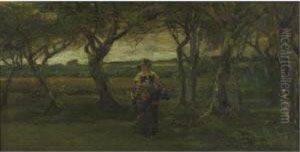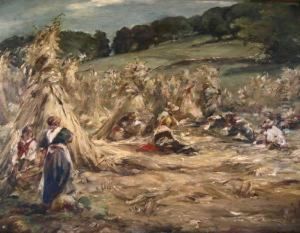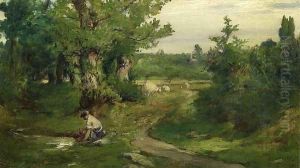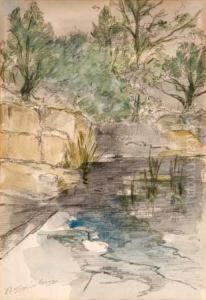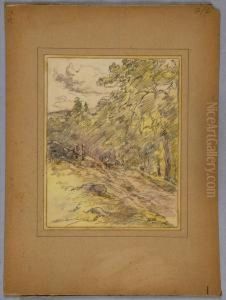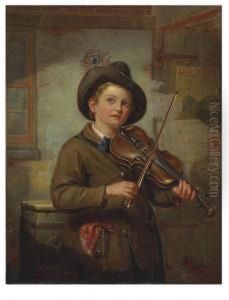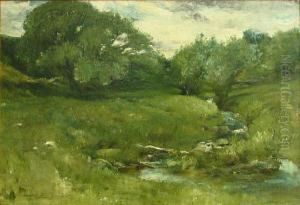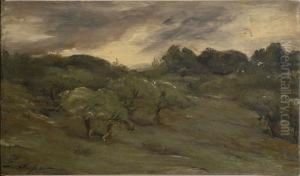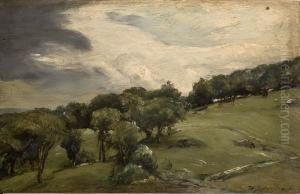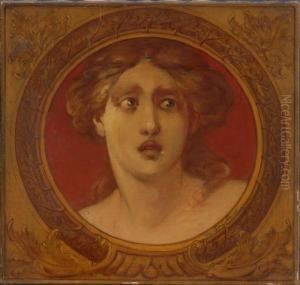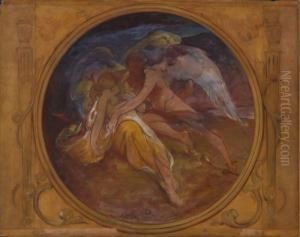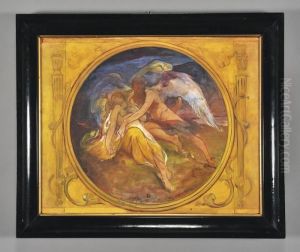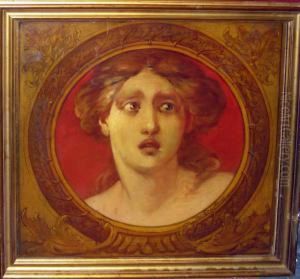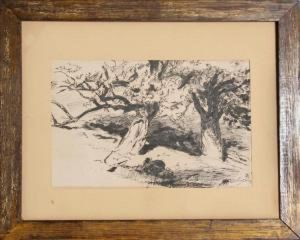Walter Shirlaw Paintings
Walter Shirlaw was a Scottish-American artist known for his contributions to American art and his role in the founding of various art institutions. Born on August 6, 1838, in Paisley, Scotland, Shirlaw emigrated with his family to the United States at the age of three. They settled in New York, but eventually moved to Chicago. His early artistic talents were evident, and although he initially worked in banking, he pursued an education in art, studying at the Chicago Academy of Design.
Shirlaw's desire to further his artistic knowledge took him to Europe, where he studied under Wilhelm von Diez at the Royal Academy in Munich, Germany. During his time in Europe, he absorbed the influences of the Munich school, which was known for its detailed realism and dark tonalities. Shirlaw became an adept painter, watercolorist, and etcher, his work reflecting a blend of European academic traditions and a distinctly American sensibility.
Upon his return to the United States in 1870, Shirlaw settled in New York City and became an active member of the art community. He was one of the founding members of the Society of American Artists in 1877 and the American Watercolor Society. His commitment to the arts also led him to play a prominent role in establishing the Art Students League of New York, which became a significant institution for the training of American artists.
Shirlaw's own work often included genre scenes, landscapes, and murals. His murals, in particular, gained him significant recognition, including the commission for the Missouri State Capitol and for the 1893 World's Columbian Exposition in Chicago. Walter Shirlaw's teaching and mentorship also made a lasting impact on younger artists, and his influence extended well into the early 20th century American art scene.
Throughout his career, Shirlaw exhibited his work widely, including at the National Academy of Design and the Pennsylvania Academy of the Fine Arts. He was recognized for his contributions to art with memberships in various prestigious art organizations, such as the National Academy of Design, where he was an Associate member from 1888 and became a full Academician in 1906.
Walter Shirlaw's career was marked by his dedication to the arts both as a practitioner and educator. He passed away on December 26, 1909, leaving behind a legacy that continues to be celebrated for its contributions to the development of American art and art education.

